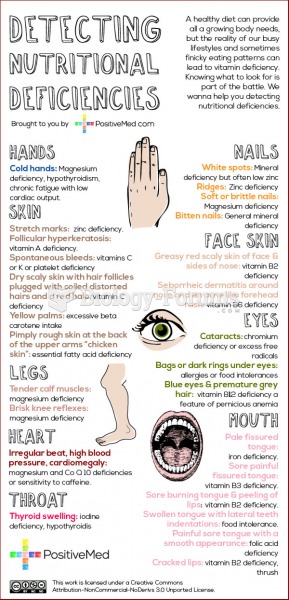Answer to Question 1
Iron deficiency impairs performance because iron helps deliver the muscles' oxygen. Insufficient oxygen delivery reduces aerobic work capacity, so the person tires easily. Iron deficiency without clinical signs of anemia may also impair physical performance.
Early in training, athletes may develop low blood hemoglobin. This condition, sometimes called sports anemia, is not a true iron-deficiency condition. Strenuous training promotes destruction of the more fragile, older red blood cells, and the resulting cleanup work reduces the blood's iron content temporarily. Strenuous activity also expands the blood's plasma volume, thereby reducing the red blood cell count per unit of blood. This low hematocrit looks like iron-deficiency anemia, but it is not the same. In sports anemia, the red blood cells do not diminish in size or number as in anemia, so the oxygen-carrying capacity is not hindered. Most researchers view sports anemia as an adaptive, temporary response to endurance training. Iron-deficiency anemia requires treatment with prescribed iron supplements, but sports anemia does not.
The best strategy for maintaining adequate iron nutrition depends on the individual. Menstruating women may border on iron deficiency even without the iron losses incurred by physical activity. Active teens of both genders have high iron needs because they are growing. Especially for women and teens, then, prescribed supplements may be needed to correct iron deficiencies. (Medical testing is needed to eliminate non-dietary causes of anemia, such as internal bleeding or cancer.)
Answer to Question 2
The intensity of physical activity affects fat use. As the intensity of activity increases, fat makes less and less of a contribution to the fuel mixture. Remember that fat can be broken down for energy only by aerobic metabolism. For fat to fuel activity, oxygen must be abundantly available. If a person is breathing easily during activity, the muscles are getting all the oxygen they need and are able to use more fat in the fuel mixture.
The duration of activity also influences fat use. Early in an activity, as the muscles draw on fatty acids, blood levels fall. If the activity continues for more than a few minutes, the hormone epinephrine signals the fat cells to begin breaking down their stored triglycerides and liberating fatty acids into the blood. As activity continues, the blood fatty acid concentration surpasses the normal resting concentration. Thereafter, sustained, moderate activity uses body fat stores as its major fuel.







